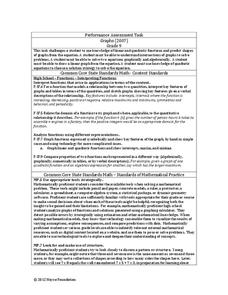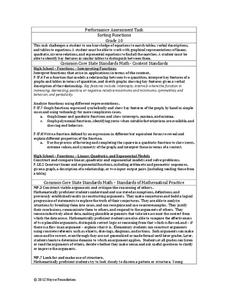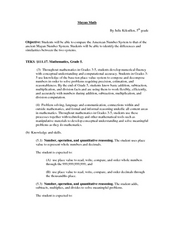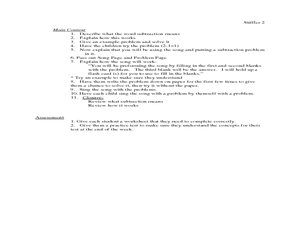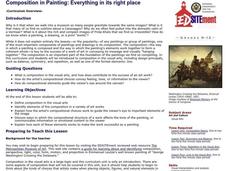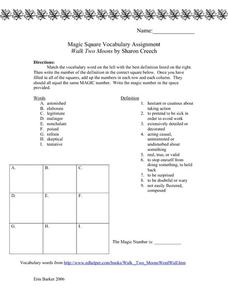Noyce Foundation
Boxes
Teach your class to think outside the box. Scholars use the concept of equality to solve a problem in the assessment task. They determine how to use a scale to identify the one box out of a set of nine boxes that is heavier than the others.
Inside Mathematics
Graphs (2007)
Challenge the class to utilize their knowledge of linear and quadratic functions to determine the intersection of the parent quadratic graph and linear proportional graphs. Using the pattern for the solutions, individuals develop a...
Inside Mathematics
Sorting Functions
Graph A goes with equation C, but table B. The short assessment task requires class members to match graphs with their corresponding tables, equations, and verbalized rules. Pupils then provide explanations on the process they used to...
University of Minnesota
Dendritic Spines Lab
This is your brain on drugs ... literally! Your neuroscientists-in-training examine the evidence of drug use on the human brain and how neurons change their connectivity when altered by drugs. They then work together to create testing...
University of Minnesota
Neurotransmission Model
Don't lose your marbles — you'll need them for a lesson on neurotransmission. Young scholars build a neurotransmission model using marbles, beads, rubber bands, string, and other elements. After studying specific neurotransmitters,...
Serendip
Structure and Function of Cells, Organs and Organ Systems
Cells of different organs have unique cell functions. Learn how cell functions vary depending on their roles in the body using an inquiry-based activity. Scholars analyze the cell structure to make comparisons to its functions, allowing...
Serendip
Cell Differentiation and Epigenetics
Pregnant women exposed to PAH air pollution increase the risk of obesity in their children. The example of epigenetics, along with others, builds the basis for understanding the process of cell differentiation. Scholars view a video,...
NASA
Christa's Lost Lesson: Effervescence
How are chemical reactions affected by gravity? Learners explore the phenomenon of effervescence as part of the Christa's Lost Lessons series. They compare findings in an experiment on effervescence to a video of a similar experiment in...
Curated OER
2001 AP® United States History Free-Response Questions
Rigorous and challenging, the AP Test for AP United States History contains a document-based question (with nine documents), as well as two additional free-response questions. Students who are preparing for the test will appreciate the...
Curated OER
Summer Intern
Your young apprentices build a function describing the percent concentration of salt in a brine. The rational function is then related to the parent function, y= 1/x, and graphed. Finally, the apprentices predict the amount of fresh...
Curated OER
Mayan Math
Fifth graders investigate the Maya's as mathematicians. In this Mayan math lessons, 5th graders work with the ancient Mayan numbering system by comparing it to the American Number System. They tell the differences and similarities...
Curated OER
Subtracting from Ten: Using Math with Music
Students explore basic math functions by singing with their classmates. In this addition and subtraction lesson, students sing the song "5 Green and Speckled Frogs"and complete a list of subtraction problems. Students complete a...
Curated OER
The Heart of the Matter
Upper elementary pupils learn about the blood transportation system and anatomy of the human heart. They fill in an outline of the human heart (not included) focusing on the flow of blood to and from the heart. Using stethoscopes,...
Curated OER
Ubi Est Mantua?
Students chose Latin authors, their birthplace, life and works. They examine pictures of an Italian city and decide which Latin author it could be related to. They answer questions in Latin.
Curated OER
Let's Have an Art Show! Let's Create an Art Gallery!
Learners plan an art show. They do everything from creating the invitations, to selecting the pieces of art, to deciding how they will be displayed. This is a rather ambitious project for 1st graders to take on, so a lot of parental...
Curated OER
Air Quality Issues
Students identify the different layers of the atmosphere. They examine the different types of air pollutants. They also discover laws in effect that work to protect the environment.
Curated OER
Everything in Its Right Place: an Introduction To Composition in Painting
Students complete a variety of activities as they study the basics of artistic composition in the visual arts.
Curated OER
Writing An Article Lesson Plan
Review active and passive voice with young writers. They will use the passive voice to write persuasive articles encouraging healthy diets. The activity includes brainstorming activities for the writing, as well as a homework extension...
Curated OER
Short 'A' and Phoneme Blending
Have your class explore the short /a/ sound. They will pronounce isolated consonant and short /a/ sounds and then blend the sounds to make a word. An assessment sheet is provided.
Curated OER
Mapping America
While learning about the Louisiana Purchase, pupils practice map skills. This motivating lesson has them answer questions about the Louisiana Territory and the United States. It provides a quick and easy way review of skills and the...
Curated OER
Word Roots 2: FIN, SED, FER Intermediate Synonym or Antonym Word Puzzle
If you are looking for a vocabulary worksheet that has a focus on word roots, then this resource might be for you! Using a word bank and knowledge of word roots, learners fill in a synonym and an antonym for each of six words. Have your...
Curated OER
Walk Two Moons: Magic Square Vocabulary Assignment
Readers work alone or in groups on complete a vocabulary exercise designed to be used with Sharon Creech’s Walk Two Moons. Using the magic square format, learners match the vocabulary words with their definitions. An answer sheet is...
Mr. E. Science
An Introduction to Matter
What's the matter? Gas, solid, liquid, or plasma. The presentation covers how to describe and identify matter, changes in matter, types of matter, measuring matter, particles of matter, Democritus, and John Dalton's Atomic Theory.
Illustrative Mathematics
Why Randomize?
Your statisticians draw several samplings from the same data set, some randomized and some not, and consider the distribution of the sample means of the two different types of samplings. The exercise demonstrates that non-random samples...

